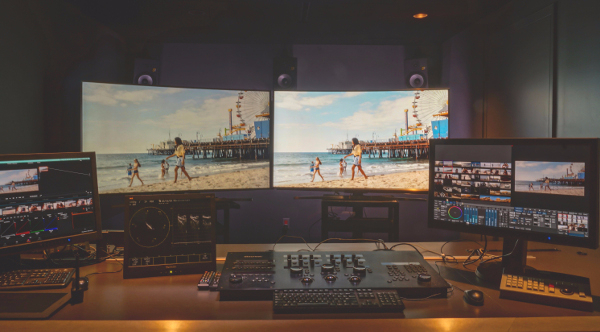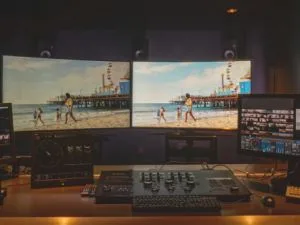We had a chance to meet with Technicolor in a suite at NAB 2015 to learn more about its plans for HDR. At NAB, the company was mainly talking about what it is doing for content creation, but it is also involved in the UHD Alliance to determine HDR distribution standards and have a stake in the decoding side as well by offering set top boxes to decode HDR content. Technicolor believes in a single stream solution that is also backwards compatible.
SMPTE has already developed some standards around HDR like SMPTE 2086, which defines several output displays to grade to, and SMPTE 2084 which defines the PQ (perception quantization) curve for allocating gray scale levels over the wide dynamic range of the content.
Technicolor describes a good, better, best HDR workflow process that meets the needs of new content creation as well as the ability to convert legacy SADR content to HDR quality.
In the Good process, an automated algorithm works on content that has been finished in a Rec.709 color space and graded to a 100 nits standard. This is more than a simple expansion of the dynamic range, with some intelligence added to better deal with the lightest and darkest parts of the scene. This is likely to work for a good deal of content, but some scenes will need further manual adjustment. The Good process can also run in real time allowing for live conversion to HDR as well.
The Better process allows for this by inserting a colorist in the loop to make sure they have the ability to fix scenes that might not be optimal. This combination is likely to be employed in most legacy conversion projects with the mix of good and better determined by the content and budget.
The Best process is geared for new content creation where Technicolor and colorists can use a whole suite of tools. This path can access the RAW data from the camera to create the highest quality HDR grade.
In addition to demonstrating these tools at NAB, Technicolor was announcing that it is now offering the good, better and best options to customers as a service and licensing HDR plug-ins to external post production facilities. These plug-ins support major color grading solutions like Lustre from Autodesk and DaVinci Resolve from BlackMagic. The tools allow for editing of a 16-bit TIFF file with live playback. Technicolor calls their processing Intelligent Tone Management and says this is done on a pixel by pixel basis. An OpenFX version of the plugin will also be available, enabling use across all platforms that support the interoperable plugin format.

In the demo, the company showed that these tools make the colorists’ job much easier as it can eliminate a lot of the windowing and rotoscoping tasks needed to apply different parameters to section of the image. Its algorithms separate the image into highlights, mid-tones and shadows with the range of these sections being adjustable. This allows a separate grade on these sections, simplifying the process.
It turns out these plug-ins also work if doing an SDR grade, so they can save time in standard production work as well.
In addition to support for content creators, Technicolor continues to iterate new technologies for the delivery of HDR content, most recently through the successful demonstration of the world’s first UHD with HDR live broadcast based on proposed ATSC 3.0 technologies.
The series of broadcasts, integrated into Sinclair’s experimental OFDM transmission system and transmitted under real-world conditions outside of a laboratory, delivered high quality HDR content broadcast at HD and 4KkUHD resolutions in a single-layer with backwards compatible standard dynamic range. Both HDR and legacy devices, including fixed position TVs and mobile devices, were all able to receive and display the broadcast signal. Based on open standards from MPEG (HEVC, SHVC, 3D Audio from MPEG-H) plus HDR, with MMT and DASH transport streaming standards, and Technicolor’s Staggercast and Fast Channel Change technologies, the broadcast met the most ATSC 3.0 requirements of any previously demonstrated system.

